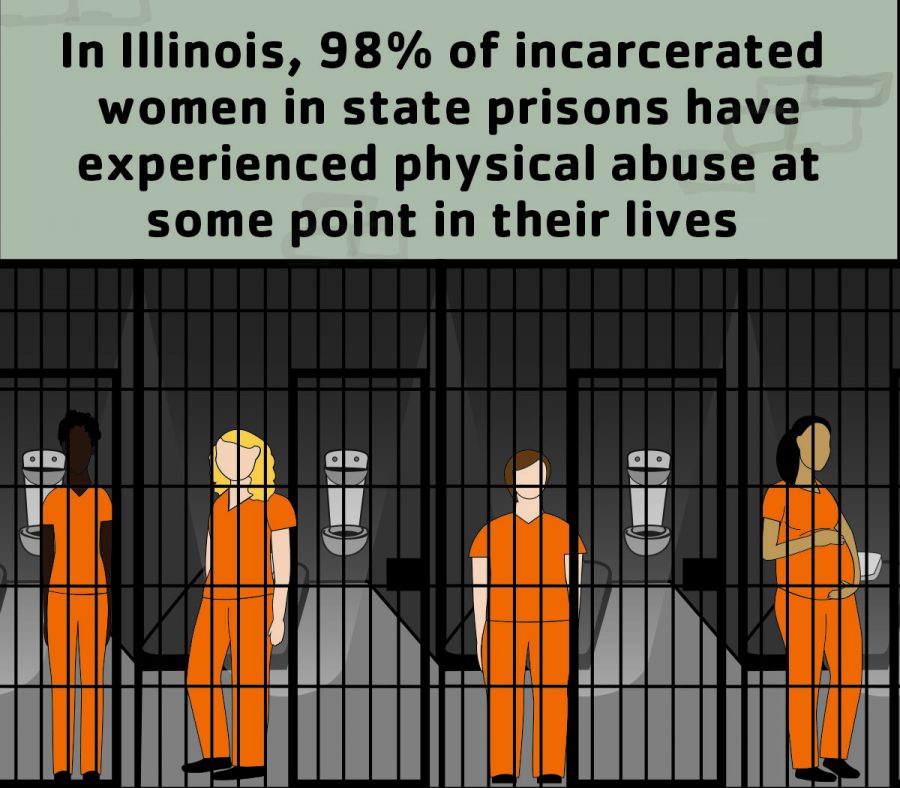New law addresses gender, trauma in women’s prisons
New law addresses gender, trauma in women’s prisons
January 27, 2018
After touring Logan Women’s Correctional Center in Lincoln, Illinois, earlier this month, Gov. Bruce Rauner signed a law making incremental changes to the Women’s Division of the Illinois Department of Corrections.
House Bill 1479, signed Jan. 16, requires the IDOC to appoint a chief administrator for the women’s division, incorporate gender-responsive programming and address specific challenges female detainees face. Incarcerated women will participate in courses designed to help them overcome any physical, sexual or emotional abuse they may have experienced prior to prison, according to a press release from Rauner’s office.
“Gender-responsive’ means that from the day a woman enters prison to the day she leaves, there will be policies that stage her development and treatment throughout the system [to] create opportunities for her to never end up in prison again,” said Deanne Benos, founder and director of the Chicago-based Women’s Justice Initiative and the individual who wrote the legislation.
While men are still the majority of prison inmates, incarcerated women are a growing population and the prison system needs to reflect that, Benos said. Since the late 1970s there has been a 830 percent rise in incarceration rates of women, she noted.
“The way that [a woman is] managed and classified in the prison system does not address [her] mental health issues or get to the bottom of her behavior to create safety for herself, but it actually triggers behaviors that are linked to abuse,” Benos said. “Not only is the system flawed, but we didn’t train or educate the people working in the system on how to handle these women with unique trauma and needs.”
Seventy-five percent of incarcerated women suffer from post-traumatic stress disorder, Benos added. In Illinois, 98 percent of incarcerated women have experienced physical abuse at some point in their lives, and 75 percent experienced sexual abuse, according to the Illinois Criminal Justice Information Authority.
Benos, who was the IDOC assistant director from 2004 to 2010, said the issues with Illinois’ female prison system stem from a 2013 state decision to save money by consolidating two prisons and converting Logan Correctional Center from a men’s to women’s prison.
“The staff at Logan Prison got a one-hour PowerPoint presentation on the differences between working with men and women and how to manage the change,” Benos said.
The state squeezed 2,100 women with various criminal histories into the facility, including 770 women diagnosed as seriously mentally ill, Benos said. As a result, suicide attempts increased tenfold, crisis calls multiplied and violence erupted at the facility, Benos said.
In the world outside of their life behind bars, incarcerating women has an immediate impact on their families, since they are primary familial caretakers. The mothers detained at Logan Correctional account for 3,700 children, said state Rep. Juliana Stratton, D-Chicago, who sponsored the legislation.
“The more we can shine a light on the needs of mothers means … making sure women are well cared for, so they can care for their children,” Stratton said.
These changes in Illinois are an important step forward, said Aleks Kajstura, legal director for the Prison Policy Initiative, noting that trauma needs to be addressed before women go into a correctional setting. In her research, Kajstura found that almost half of the incarcerated women in the U.S. are held in jails, not prisons, and this new Illinois law will not apply to local jails.
“We have to reduce the number of people entering the prison system by making sure their communities are strong, thriving and have opportunities,” Stratton said. “Then we have to make sure that [as women leave prison], they don’t have barriers to housing, employment and health care so they don’t cycle in and out of the [correctional] system.”








